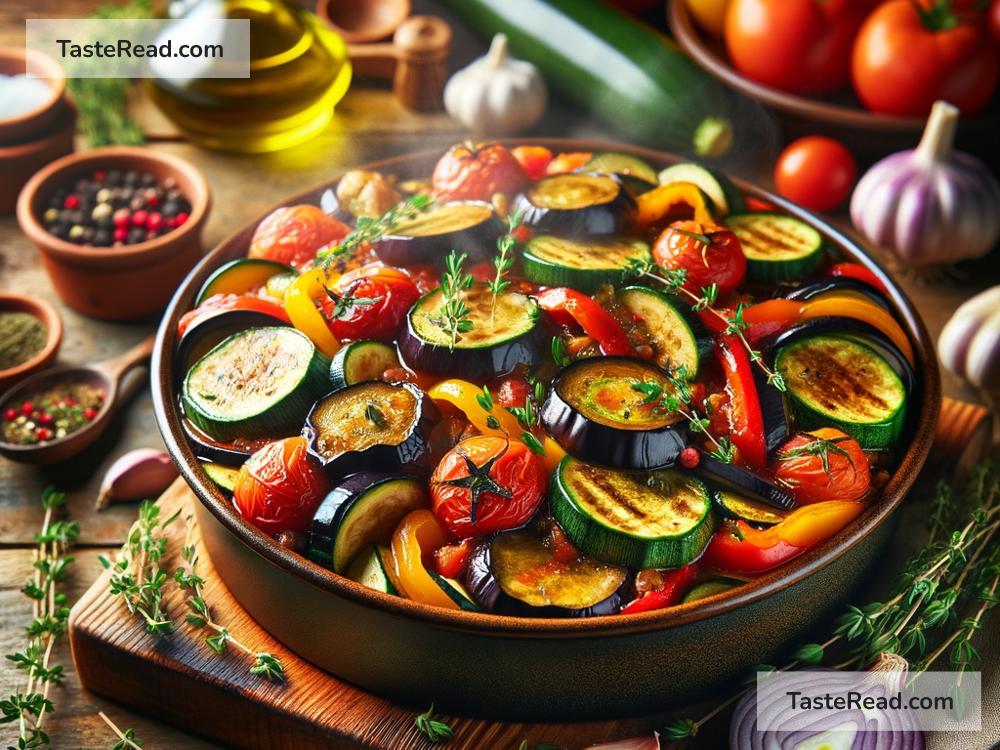The Story of French Ratatouille: A Timeless Dish
France is known for its delicious food, and one dish that stands out is Ratatouille. This colorful vegetable stew is filled with healthy ingredients and has a fascinating history. Let’s explore the story behind Ratatouille, how it was created, and how it became a symbol of French cooking.
What Is Ratatouille?
Ratatouille is a dish made primarily from vegetables such as tomatoes, zucchini, eggplant, onions, garlic, and bell peppers. These ingredients are cooked slowly with olive oil and herbs like thyme, basil, and parsley. The end result is a flavorful and comforting dish.
Ratatouille is popular not just for its taste, but also for its versatility. It can be eaten as a main course, a side dish, or even over rice or pasta. It is a favorite among vegetarians because it’s plant-based and satisfying.
Where Does Ratatouille Come From?
The story of Ratatouille begins in the Provence region of France, located in the southern part of the country. Provence is famous for its Mediterranean climate, which is perfect for growing fresh vegetables, herbs, and olives. Because of this abundance of produce, locals created dishes using simple, seasonal ingredients.
The word “Ratatouille” comes from two French verbs: rata, meaning “chunky stew,” and touiller, meaning “to stir.” This name perfectly describes the dish, which involves stirring together a mix of wholesome vegetables.
While Ratatouille may seem fancy now, its origins were humble. Farmers and workers in Provence made Ratatouille as a way to use up leftover vegetables. Instead of wasting food, they created a dish that was both practical and delicious. Slowly, Ratatouille grew in popularity, spreading across France and later the rest of the world.
The Influence of Mediterranean Cooking
One reason Ratatouille is so special is its connection to Mediterranean cuisine. The Mediterranean region—stretching from southern France to Italy, Greece, and North Africa—has always valued fresh, simple ingredients. Olive oil is a key ingredient, along with tomatoes, garlic, and herbs.
Ratatouille shares similarities with other Mediterranean dishes, such as Italy’s caponata and Spain’s pisto. Each of these dishes uses vegetables and follows the same idea: Take what’s fresh and cook it with love. This shared culinary philosophy shows how connected Mediterranean cultures are, even through their food.
Ratatouille in French Culture
Ratatouille isn’t just a dish; it’s a symbol of French cooking. France is famous for food that is elegant yet simple, and Ratatouille fits perfectly into this tradition. While many associate French cuisine with fancy meals and expensive ingredients, Ratatouille reminds people that a beautifully cooked dish can come from humble roots.
In modern French homes, Ratatouille remains a favorite because it is healthy, inexpensive, and easy to make. Families enjoy cooking it together, using vegetables from their gardens or local markets. It’s also a dish that adapts well to different diets, making it loved around the world.
Ratatouille in Pop Culture
Ratatouille gained even more fame with the release of the Pixar movie Ratatouille in 2007. The animated film tells the story of a rat named Remy who dreams of becoming a great chef in Paris. In the movie, Ratatouille takes on a special meaning: It is not just a dish, but a reminder that cooking is about passion and creativity.
One memorable scene shows Remy preparing Ratatouille for a strict food critic. Instead of serving the traditional chunky stew, Remy makes a more artistic version called confit byaldi. This uses thinly sliced vegetables arranged in a spiral pattern and baked with a flavorful sauce. The critic is reminded of his childhood and is deeply moved by the dish, showing the emotional power food can have.
Thanks to the movie, many people around the world discovered Ratatouille for the first time and were inspired to try making it at home.
How to Make Ratatouille at Home
Making Ratatouille doesn’t require fancy tools or techniques. All it takes is fresh vegetables, olive oil, and a bit of patience. Here’s a simple way to cook it:
-
Gather Ingredients: You’ll need tomatoes, zucchini, eggplant, bell peppers, onions, garlic, olive oil, and herbs like thyme and basil.
-
Prepare Veggies: Chop or slice the vegetables evenly to ensure they cook at the same rate.
-
Cook Slowly: Heat olive oil in a pan and sauté the garlic and onions until soft. Add the rest of the vegetables and season with herbs, salt, and pepper. Cook on low heat, stirring occasionally, to let the flavors blend.
-
Serve: Ratatouille can be served hot or cold, as a main dish or a side. Pair it with crusty bread, rice, or pasta for a complete meal.
A Dish That Stands the Test of Time
Ratatouille’s story shows us that great food doesn’t have to be complicated. With its humble beginnings in Provence and its rise to worldwide fame, this dish reminds us to appreciate simple, fresh ingredients. Whether you’re cooking in a gourmet kitchen or at home with your family, Ratatouille proves that cooking is about creativity, connection, and heart.
So the next time you enjoy Ratatouille, think about its journey and the farmers who first created it. It’s more than just a stew—it’s a celebration of good food and timeless traditions.


